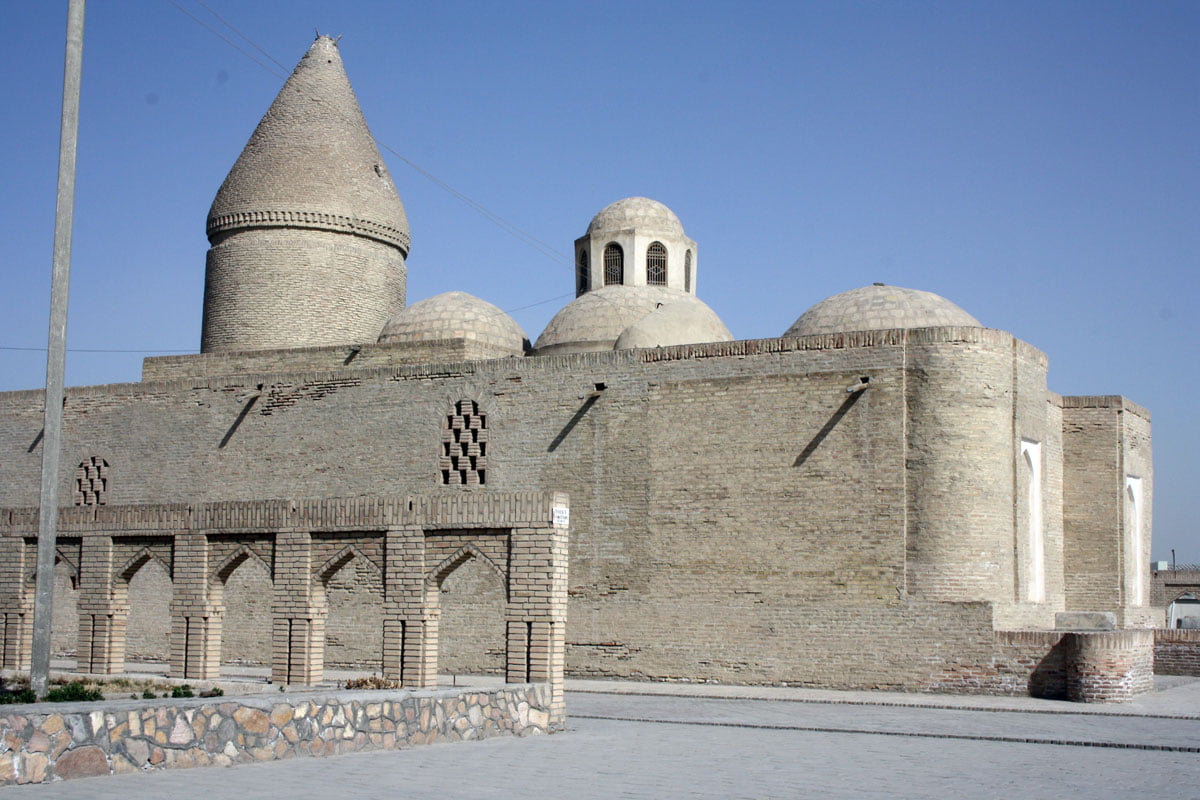Bukhara - Mausoleum Chashma Ayub

The Chashma Ayub mausoleum in Bukhara: a sacred place of historical and cultural significance
The Chashma Ayub mausoleum in Bukhara, together with the fountain of the same name, is often translated as ‘Job’s spring’. In Arabic tradition, the prophet Job is known as Ayub, and this place is of sacred significance for three religions. The origin of the name and the legends surrounding this place go back to a fascinating story: according to one legend, the prophet Job came to the region before the city of Bukhara was founded. At that time, the locals were suffering from a severe drought. In desperation, they prayed to God to deliver them from the drought. In answer to their prayers, Job struck the ground with his staff – and in the place of the blow, a well of pure, cool water sprang up. Because of this miracle, a number of other miraculous properties have been attributed to the well over the centuries. It is said that the water from the well has healing powers and can fulfil wishes.
Regardless of the historical uncertainties regarding the exact events surrounding the name Ayub, this place plays a decisive role in the development of Bukhara and its surroundings, especially with regard to the diaspora of Bukhara Jews. Even in pre-Islamic times, Chashma Ayub was the holy centre of Bukhara. The ‘Naukand’ cemetery, which is also associated with this holy site, was built in the immediate vicinity.
The construction of the Chashma Ayub mausoleum dates back to the time of the Karakhanid dynasty in the 12th century. However, it was in the 14th century, under the reign of Amir Temur, that the mausoleum was extended and embellished to its present form. Temur commissioned the best craftsmen to continue the work of his predecessors and make the building even more imposing. The architects involved in the design of this masterpiece were from Shakhrisabz and Khorezm, and their individual style is clearly recognisable in many aspects of the building.
Over the centuries, from the 14th to the 19th century, the mausoleum was repeatedly remodelled and extended. There are several tombs in the grounds of the mausoleum, including the tomb of Khoja Hafiz Gunjori, an important scholar and theologian who was buried here in 1022.
In addition to its religious and historical significance, the Chashma Ayub mausoleum is also of great interest today for its water museum. The museum offers a detailed insight into the history and development of water supply in the region. The exhibits include ceramic water pipes from the 18th and 19th centuries as well as a variety of containers made of leather, glass and other materials that were used specifically for storing water. Models of water reservoirs and numerous other objects complete the exhibition and illustrate the importance of water for survival in the region.
The Water Museum also offers a fascinating overview of the history of water supply in Central Asia over a period of ten centuries. The presentation of the Aral Sea disaster is particularly impressive, with maps of the spreading desert and touching photographs documenting the dramatic changes in the region.
Of particular interest to tourists is the unique carpet exhibition, which takes place regularly on the grounds of Chashma Ayub. This event offers an insight into the rich tradition of carpet weaving, which is of great cultural significance for Central Asia.
In summary, the Chashma Ayub mausoleum in Bukhara is not only an important religious and historical site, but also an important cultural centre that bridges the gap between past and present and gives visitors a deep insight into the history and culture of Central Asia.
